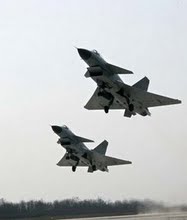Details have emerged of China’s next generation J-11B fighter
This article published in Jane's Defense Weekly
Details have emerged of China’s next generation J-11B heavy air superiority fighter aircraft, a further development of Sukhoi’s Su-27SK (Chinese designation J-11) that ended production in 2004 ahead of its planned run.
Shenyang Aviation Corporation (SAC) assembled 95 J-11 fighters from imported Russian components, although the original project had called for 200 aircraft, and it is likely production was stopped in anticipation of the improved J-11B.
Although based on the Su-27SK, the latest incarnation has substantial improvements including a reduced radar cross-section (RCS), strengthened airframe and an improved fire control radar as well as new flight control system, glass cockpit and engine.
The improvements are planned to nake the aircraft to a fourth generation platform; the Yanliang Flight Test Center currently has three J-11B under testing (No 521, No 523 and No 524).
The most significant change for the aircraft is improved stealth; the changes are planned to bring the RCS from the 15 sqm of the Su-27 to under 5 sqm and possible as low as 3 sqm.
The change is not to the dynamic shape of the aircraft but involves the modification of the air intake lip with a radar wave shield and the installation of radar absorbing materials on the intake interior. In addition the RCS will be reduced with Chinese made signature reduction paint.
The strengthening of the airframe, a key aspect since the life expectancy of the aircraft has been criticised by the People’s Liberation Army Air Force, has been achieved through wind-tunnel tests of weapons carriage.
Additionally, the empty weight of the aircraft has been reduced by about 700 kg through the use of composite materials.
It is believed a further 10,000 hours has been added to the life of the aircraft compared with the Su-27SK.
The radar installed on the J-11B is believed to be more powerful than the Type 1473 installed on the J-10; it is estimated to be able to track 20 targets and simultaneously lock onto six targets.
J-11B will incorporate a quadruply-redundant digital fly-by-wire flight control system with mechanical back-up. Additionally, the aircraft has a fully glass cockpit but there are two variants - a reflecting head-up display (HUD) with four multi-function displays (MFDs) and a holographic HUD with three MFDs.
It is likely the former cockpit is for ground attack and the latter for air combat. The new cockpits integrate fire control radar, electro-optic countermeasure pods and infra-red search and track.
The improved radar and cockpit have allowed for the integration of newer weapons such as the CATIC PL-12 active radar-guided air-to-air missile.
The J-11 AL-31F engine will be replaced with the WS10A turbofan, providing longer lifespan and reduced fuel consumption.
Beyond J-12, China has plans for a carrier borne J-13, unlikely to be realised before 2015; the J-14, which is planned as a competitor to Lockheed Martin’s F-22, on the distant horizon at 2018; a two-seat J-11BS (2009); a naval J-11J (2010) and two-seat J-11JS (2011); and an improved J-13G and a navalised J-13J (2017).
More aircraft and unmanned combat aerial vehicles are being considered for even further in the future but new aircraft types will need to rise above the financial, political and industrial challenges that are likely to plague the programmes.



No comments:
Post a Comment